March 2021 came around and reminded us of an important milestone – 1 year since our working format has cardinally changed at DevelopmentAid! Since then, have become best friends with flexibility, a term that represents our working style to this day. Last year, we have transferred all of our activity to a remote format in record time. Almost overnight, company’s staff was working from all corners of our city, continuing to deliver the same quality and impeccable service. But let’s fast-forward to the present day…
We asked our colleagues to describe their working formats and habits over the year of restrictions. Thus, we have compiled a large amount of information, where our colleagues have told us about the way they work, what they wished could change, and how they see their future working life. We invite you to check out our survey digest with us!
So far, about 1/5 of our employees currently come to the office daily, another 1/5 prefer to work from home, and there are colleagues who come to the office when there’s a necessity. Interestingly, our employees’ preferences and circumstances vary, which is also reflected in their current working habits. When speaking about the experience of working in the office, those who do have this possibility have given a strong 4.12 rating out of 5, indicating their satisfaction with current working conditions.
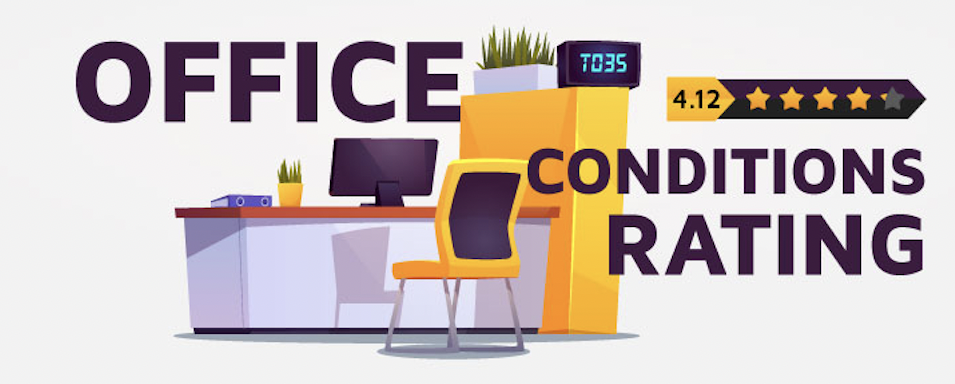
Next up, we have likewise asked our colleagues that work from home to rate their experience. They have given a similarly strong 4.15 rating out of 5, which shows that both ‘leagues’ are highly satisfied with their chosen format of work.
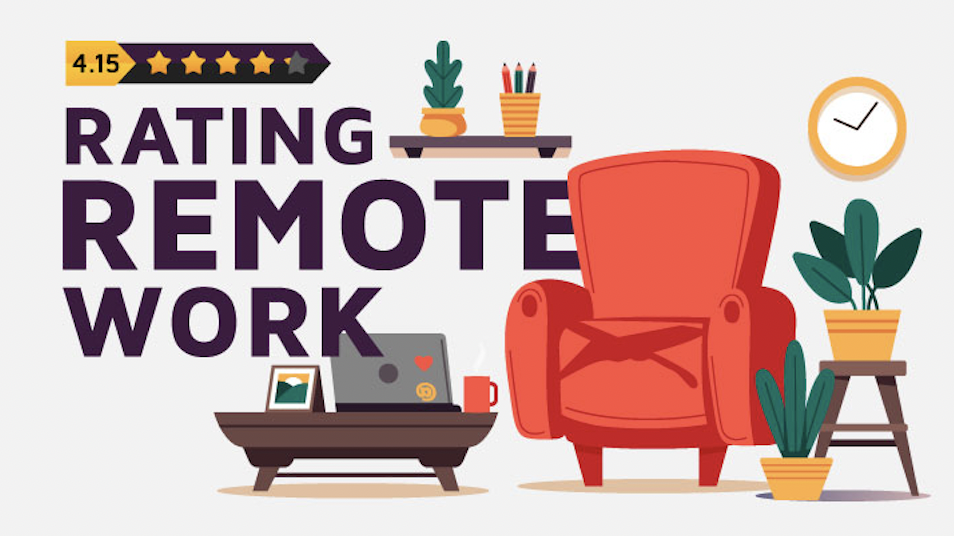
We have also asked our colleagues if they plan on working from the office while the pandemic is still happening and restrictions are in place. Answering this question, half of our respondents have mentioned their desire to come to the office, while 1/4 employees said they prefer to stay home. Besides, around 20% of our colleagues said they’re willing to come to the office when there is a specific necessity.
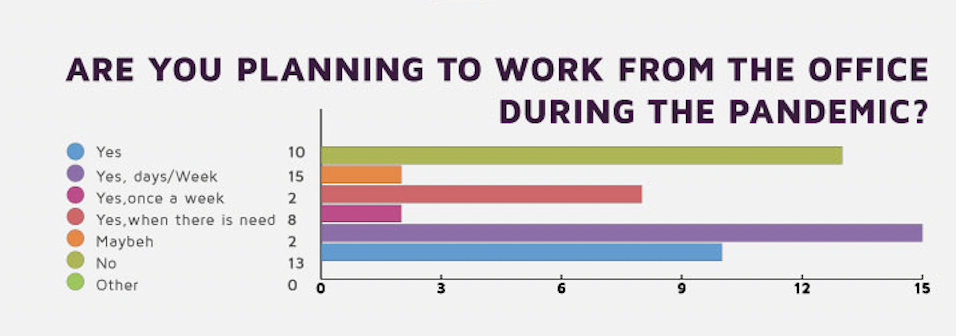
Employees have motivated their desire to come to the office due to the communication opportunities it offers and better focusing. For instance, one respondent has stated: “Working from home means no social life, no usual routines, too much psychological pressure. That’s too much even for introverts!”.
We have then asked our employees about the near future, when the pandemic will hopefully be over. How will their preferences regarding their working format change? 68% of employees manifested their desire to come to the office after the pandemic is over, and 20% stated they will come once a week or when a need arises. Thus, once pressing issues of the pandemic will be resolved, we can reasonably expect employees to come back to the office at least for some of their working time. Great news!
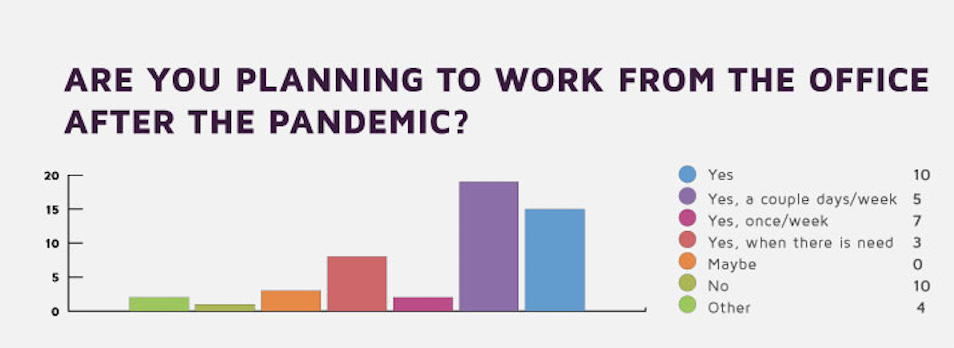
In this question’s case, the key word was again flexibility. Most of our colleagues mentioned that after the pandemic, they would like to have the option of mostly coming to the office, but also being able to work from home when they choose to. Here’s what one employee said: “I would prefer for the system to remain flexible even after the pandemic so that I could work from home 2-3 days per week even after the pandemic.”
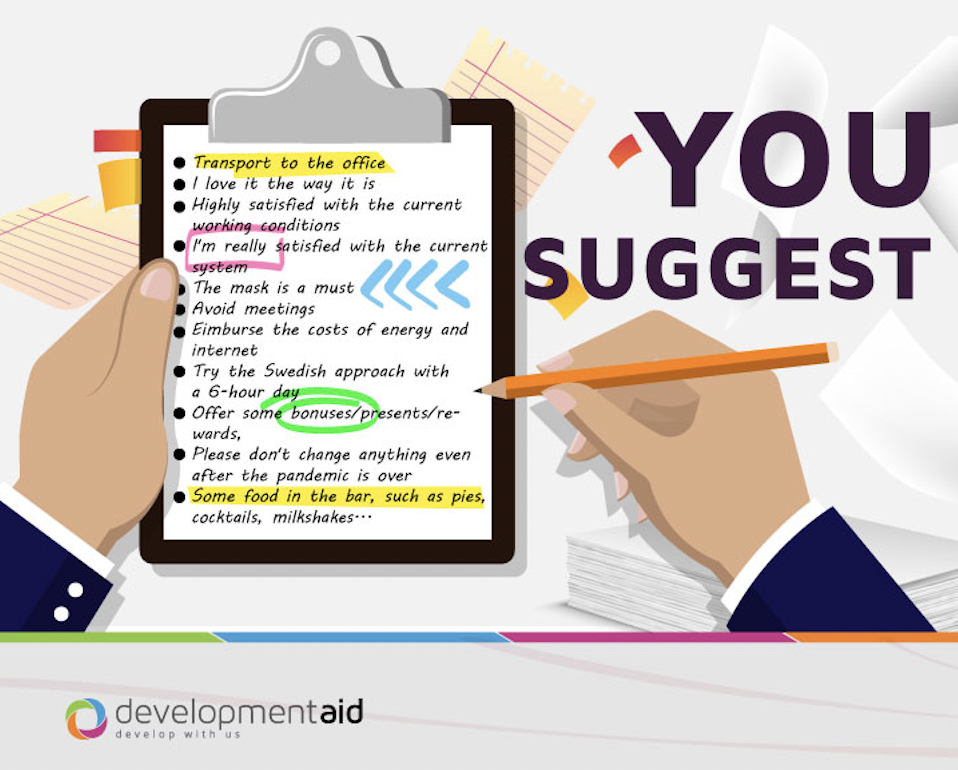
Overall, our survey helped us understand the employees’ preferences and attitudes towards the changing working landscape. As mentioned, we all appreciate and benefit of the flexibility offered so far, and wish for it to remain the same. From our side, we believe that flexibility is indeed indispensable and should be the new norm. We’re more than glad to offer our colleagues the format they believe they need and explore new opportunities!



